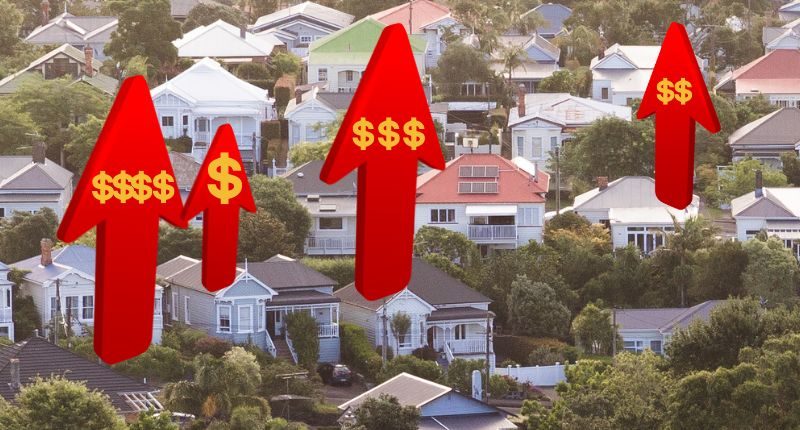- Rental crisis likely to worsen with many factors pushing on the market
- Demand side is being driven by several factors including migration and increased separations
- Supply continues to be constrained by materials and labour shortages
When will rental rates fall and vacancies rise?
The Status Quo for vacancy rates around the country continues to do its best rendition of the band’s hit “Down Down”, and prices, the opposite.
In a snapshot of the year so far, Canberra kicked off 2022 with a vacancy rate of 2.1% and the most recent data shows 1.5%, according to SQM Research. Sydney showed similar figures, whereas Melbourne started the year at 2.7%, now 1.7%.
Brisbane began the year at 1.1% and now is at 0.7%, Adelaide 0.4% now 0.3%, Hobart 0.3%, now 0.4%, Perth 0.6% and remains so, and Darwin started the year with 0.9%, now 0.5%. The national figures have also been falling, starting 2022 with 1.3%, now 1%.
National
The number of listings, nationally, has also been falling, with a brief Covid peak above 105,000, subsequently trending downwards to around 57,000.
National
Weekly rents have also been on the rise:
Weekly rents for all houses, excluding units, in June 2022
| City | Weekly rent | Direction | 12 month % change | 3 year % change |
| Canberra | $775 | ↑ | 9.0% | 7.6% |
| Sydney | $823 | ↑ | 21.2% | 6.2% |
| Darwin | $647 | ↑ | 5.4% | 7.4% |
| Brisbane | $613 | ↑ | 21.1% | 10.1% |
| Adelaide | $522 | ↑ | 17.2% | 9.5% |
| Hobart | $523 | ↑ | 11.8% | 6.1% |
| Melbourne | $561 | ↑ | 8.7% | 1.3% |
| Perth | $585 | ↑ | 12.1% | 9.4% |
| National | $588 | ↑ | 15.5% | 10.0% |
| Capital city average | $661 | ↑ | 15.8% | 6.2% |
Data source: SQM Research.
The rise and rise of rents
When will the rental Icarus finally see prices melt? Not for a while, according to a report by InvestorKit that shows rents are set to surge between $2600 and $5200 over the next year or two.
The report considered over 300 regions and the rental demand, supply indicators, long and short term market pressure, and rental price trends.
InvestorKit found 20 regions will likely see rents continue to explode, and it isn’t just the capital cities.
The 20 regions set to surge, according to the report, are:
- Brisbane,
- Adelaide,
- Perth,
- Hobart,
- Canberra,
- Devonport, QLD
- Burnie-Ulverstone, QLD
- Nerang, QLD
- Bundaberg, QLD
- Maryborough, QLD
- Bunderim, QLD
- Toowoomba, QLD
- Queanbeyan, ACT
- Lake Macquarie – East, NSW
- Kiama – Shellharbour, NSW
- Wagga Wagga, NSW
- Barossa, SA
- Yorke Peninsula, SA
- Warrnambool, VIC, and
- Shepparton, VIC.
The InvestorKit report found that among the obvious reasons like low stock, and high demand, new housing supply is also particularly low in some areas. Brisbane’s new house buildings account for only 2.8% of the total number of houses.
Among the reasons pushing Adelaide prices up, the report included “The city’s increasing employment opportunities backed by heavy infrastructure investments and moderate supply levels…”.
Hobart is also looking down a rather empty barrel, the report said “With just 2.23 per cent of new house builds approved and a downward trend, paired with Hobart’s rising job availability and low supply levels, rents over the next 12-24 months will continue to surge.”
But isn’t the market turning?
As we recently reported, some experts are seeing the broader market slowing.
There is a cornucopia of factors potentially leading to interesting moves in the market. Buyers being more discerning and savvy, more property inspections and lower desperation, interest rates, lifestyle changes and therefore demand changes, variable mortgage rates changing, changes to minimum repayments, reduced borrowing power, higher cost of living, return of immigration, and more.
How will this, and other factors affect rentals?
Supply-side, ongoing supply chain issues mean it is still taking considerable time to build new homes.
On the demand side, migration, increased separation and divorces, among other reasons are also pushing demand up.
Rising interest rates were also cited in The Property Tribune’s latest Melbourne predictions as a reason scaring novice investors away.
So while it seems the market may be slowing and becoming more favourable for buyers, renters will continue copping the unpleasant end of the stick for some time yet.








